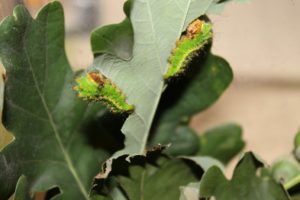 Silk is a type of woven fabric that feels like no other type of clothing against the skin. It is a natural protein fiber made by silkworms and is a premium textile dating back thousands of years.
Silk is a type of woven fabric that feels like no other type of clothing against the skin. It is a natural protein fiber made by silkworms and is a premium textile dating back thousands of years.
This wonderful material has been the subject of medical discussion—it may be used to repair damaged spinal cords.
Advertisement
Scientists from the Universities of Aberdeen and Oxford have discovered that cleaned, sterilized silk from the Antheraea pernyi (AP) larvae or Chinese (oak) tussar moth had properties ideal for repairing the spinal cord.
Providing the perfect structure for recovery
While previous studies have used other types of silkworms to repair peripheral nerves, this research team has found that AP silk can enhance significant nerve regeneration and function. The researchers praise this as being the best material for central nervous system repair.
“Spinal injuries affect 250,000—500,000 people globally every year (WHO). It can have devastating effects for people who suffer them, including loss of motor and sensory function below the level of injury, and bladder, bowel, and sexual dysfunction. If we can work to find a solution, such as the use of AP silk, to improve their quality of life even slightly then it is beneficial. Intriguingly, AP silk may also have the potential to aid repair following brain injury,” said Dr. Wenlong Huang from the University of Aberdeen.
In the United States alone, it is estimated that about 10,000 cases of spinal cord injury occur every year, with 35.9 percent caused by motor vehicle accidents, 29.5 percent caused by violence, and 20.3 percent caused by falls. The annual cost for the United States to treat the damage and help patients manage it is over seven billion for all causes of spinal cord injury.
Having many beneficial properties for spinal repair
Modified Antheraea pernyi silk has the ideal structure to repair spinal tissue and support nerve growth. Currently, there is no cure for serious spinal cord trauma, with scar tissue being a major hindrance for nerve repair as they act as a barrier, not allowing spinal nerves to cross.
The silk cultivated by the researchers is said to have the correct rigidity, as being too hard would not allow for nerves to grow across it and may even further damage the surrounding spinal cord tissue. After the silk served its function, the material simply dissolves. gradually allowing for the body to take over, supporting further nerve growth.
Advertisement
The researchers go on to say that AP silk has a repeated “RGD” chemical sequence on its surface. allowing nerve cell receptors to bind to it, and in a way, encouraging them to grow. Additionally, this silk does not seem to trigger an immune response, minimizing inflammatory reactions.
“This is yet another, and so far by far the most important and exciting example of the value of silks and their derivatives in modern medicine with its emphasis on using natural regeneration for healing major as well as minor wounds,” said Fritz Vollrath from Oxford University.
Related: New surgery may offer treatment for spinal injuries
